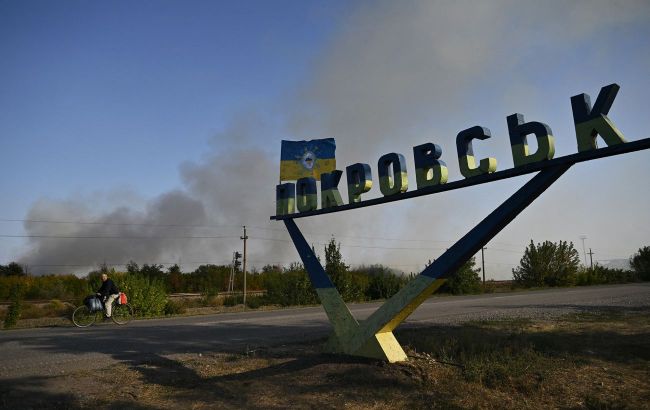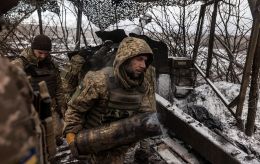Clearing operation in Pokrovsk: Russian sabotage groups breakthrough and its possible consequences
 Photo: Russian sabotage groups broke through to Pokrovsk (Getty Images)
Photo: Russian sabotage groups broke through to Pokrovsk (Getty Images)
Approximately three days ago, enemy sabotage and reconnaissance groups broke through into Pokrovsk. Military personnel and observers claim that the pressure from Russian forces on the city is intensifying seriously.
Read about the current situation in Pokrovsk in the material by RBC‑Ukraine
Yesterday, the analytical OSINT project DeepState reported that over the weekend, enemy sabotage and reconnaissance groups entered Pokrovsk, a city that is currently one of the key targets for the Russians on the front. The goal of the enemy is to keep their positions, wait for reinforcements, and take control of Zakhysnykiv Ukrainy Street.
"Taking advantage of the fact that one of the brigades simply ran out of infantry, and also due to inaccurate local situational reporting, (Russians - ed.) entered the city itself via Zvirove. The guys from the 155th Separate Mechanized Brigade and the 68th Separate Jaeger Brigade had to urgently correct the situation so that it didn't turn into a catastrophe," the DeepState reported.
Sources within the military speaking to RBC‑Ukraine confirm that this Sunday, July 20, enemy sabotage and reconnaissance groups did indeed break into the city from the southwest settlements - Zvirove, Leontovychi, and Troianda.
From Zakhysnykiv Ukrainy Street, the enemy attempted to push through to Torhivelna Street. However, the breakthrough was immediately detected, and the sabotage groups were blocked. According to the media outlet, there may have been four to five such groups, each consisting of five to six people.
One of the interlocutors said that the clearing operation has continued for at least three days. Additional forces were sent to the city, and as of today, the situation has overall stabilized, the source noted. In his words, the clearing operation is complicated by the fact that many civilians still remain in Pokrovsk.
Kostiantyn Mashovets, Coordinator of the Information Resistance group, explains that the enemy is now trying to complete their shaping operation before the actual assault on the Pokrovsk defensive district.
"The enemy, composed of the Center army group, is conducting offensive actions on the flanks of the defensive district in Pokrovsk. They are trying to break into the area of the settlement of Rodynske from the east and northeast, to bypass Myrnohrad from the north. The enemy has also become active southwest of Pokrovsk - that's the area of Udachne, Muravka, and Novomykolaivka, advancing on both banks of the Solona River. Essentially, the enemy is trying to advance. It's not all going as they'd like, since their momentum, let's say, is not very great," Mashovets said in a conversation with RBC‑Ukraine.
What leads up to this
Russia intensified pressure on Pokrovsk last autumn. Many analysts and military personnel, in off‑the‑record conversations, believed that by the end of 2024, battles might already be taking place within the city itself. From February to April, the Ukrainian army managed to improve its positions by carrying out a series of successful counter‑offensive actions on the southern approaches to Pokrovsk. This was in the areas of Pishchane, Shevchenka, Udachne, and Kotlyne.
However, by summer, Russian troops once again stepped up their advance in this sector. They managed to develop a breakthrough northeast of the city, taking control of a significant section of the road connecting Pokrovsk and Kostiantyntynivka (T‑0504).
"After the elimination of the Kurakhove direction, the 8th Combined Arms Army was transferred into the junction between the 51st (which operates on the Toretsk direction) and the 2nd Combined Arms Army, which actually created this tactical breakthrough to the road, north of Vozdvyzhenka. Then they increased forces and means and effectively expanded this breakthrough, simultaneously advancing both toward Pokrovsk and toward Kostyantynivka," Mashovets explained.
In his words, the arrival of the 8th Combined Arms Army actually densified the operational deployment and formation of enemy forces on the adjacent Toretsk axis. As a result, Russians freed up significant forces from the 51st Army and redeployed them for battles northeast of the Pokrovsk-Myrnohrad agglomeration.
"As far as I understand, several units from the 51st Combined Arms Army were transferred into the Center army group, including the 1st and 9th brigades - they are considered the most combat‑capable within that Combined Arms Army. They were placed in the area of Rodynske and Fedorivka to bypass Pokrovsk from the north and northeast," Mashovets explained.
These additional forces gave the Russians the ability to conduct active operations simultaneously on both flanks of the Pokrovsk direction. Because in addition to attempts to bypass Myrnohrad and Pokrovsk from the north, the aggressor is also pressing on Pokrovsk from the south, from where the sabotage groups entered the city.

